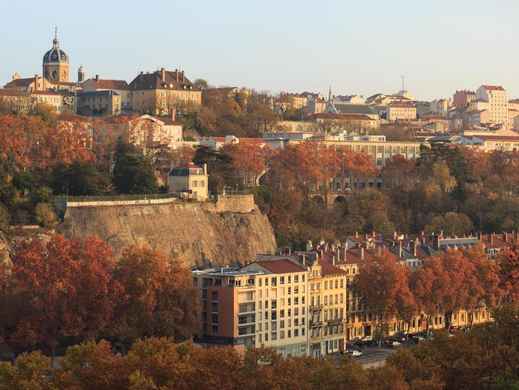


Rhône
Europe
/
France
/
Rhône
Nestled in southeastern France, the Rhône region stretches along the mighty Rhône River, flowing from the Swiss Alps through Lyon and down to the Mediterranean Sea. The climate here offers warm, dry summers perfect for vineyard cultivation, while winters remain relatively mild in the valleys but snowy in higher elevations. Spring and fall bring comfortable temperatures and spectacular color changes across the vineyards and forests, making them ideal seasons for exploration.
Life in the Rhône revolves around an appreciation for the finer things: exceptional food, world-class wines, and a relaxed pace that prioritizes quality over quantity. Locals embrace an outdoor lifestyle, particularly in the warmer months, with café terraces, markets, and riverside promenades buzzing with activity. There's a palpable pride in regional traditions, yet the area maintains a progressive outlook, especially in urban centers like Lyon.
What makes the Rhône truly special is its remarkable diversity within a relatively compact area. From the gastronomic wonders of Lyon (France's culinary capital) to the sun-drenched vineyards of Côte du Rhône, from Roman ruins to medieval villages, the region offers an authentic French experience without the overwhelming tourism of Paris or the Riviera. The landscapes shift dramatically as you travel—dense city centers give way to rolling vineyards, lavender fields, and eventually the rugged pre-Alpine terrain.
Food here is a religion, with Lyon's traditional bouchons serving hearty classics like quenelles (fish dumplings), andouillette sausage, and pink praline tart. Further south, cuisine takes on more Mediterranean influences with olive oil, herbs, and fresh produce dominating plates. The signature experience remains wine tasting through villages like Côte-Rôtie, Hermitage, and Châteauneuf-du-Pape, where world-famous Syrah and Grenache grapes produce exceptional reds.
Don't miss Lyon's traboules—hidden passageways threading through the old town that once allowed silk workers to transport goods while staying protected from rain. The ancient Roman theater in Vienne hosts summer jazz festivals against a backdrop of 2,000-year-old stones, creating an unforgettable atmosphere. And for something truly spectacular, time your visit with the Festival of Lights (Fête des Lumières) in Lyon each December, when the entire city transforms into a canvas of light installations and projections.

Get to Know Rhone
Take a tour of this destination's highlights
Popular Areas in Rhône

Travel Tips for Rhone
What you need to know before traveling here
Getting Around Rhône
A guide to Rhône's local transportation
For a unique perspective, river cruises operate along the Rhône between Lyon and Avignon. Options range from hour-long sightseeing trips to multi-day luxury cruises. In Lyon, short cruises on the Saône and Rhône rivers provide beautiful views of the city's architecture. These aren't daily transportation but offer a scenic way to travel between major destinations while enjoying the region's landscapes.
Practical Tips for Rhône
Things to prepare and best way to visit
While major wine towns have train stations, reaching the most picturesque small villages can be challenging with public transportation alone. Consider a combination approach: use trains between major points, then local buses, guided tours, or occasional taxis to reach outlying villages. Some tourism offices offer shuttle services during peak season connecting train stations to nearby villages.
The train line running along the Rhône Valley is the most efficient option, with regular service between major points. Rent a car for maximum flexibility, especially if visiting smaller domaines or villages off the main route. The distance from Lyon to Avignon is about 2.5 hours by train or car, making it feasible to experience both regions even on a shorter trip.
Late spring (May-June) and early fall (September-October) offer ideal weather, fewer crowds, and stunning landscapes. Fall brings the added bonus of grape harvest activities in wine regions, while spring showcases blooming fields and gardens. Summer (July-August) is warm and festive but can be crowded and expensive, while winter is quiet except during Lyon's Festival of Lights in December.
Look for pogne (a sweet brioche from Valence), caillettes (herb and meat patties from Ardèche), poulet aux écrevisses (chicken with crayfish), bugnes (crispy ribbon-shaped pastries), and cervelle de canut (a soft herb cheese spread whose name translates amusingly to "silk worker's brain"). Each sub-region has its specialties, so ask locals for recommendations wherever you go.
In Lyon and larger towns, you'll find English speakers in tourist areas, hotels, and many restaurants. In smaller villages and rural areas, basic French phrases are extremely helpful and appreciated by locals. Download a translation app and learn simple greetings, numbers, and food terms—even minimal effort goes a long way in creating positive interactions and showing respect for the culture.
See All Practical Tips for Rhone

Explore Rhone
Create your itinerary with our top picks below

Get to Know Rhone

Travel Tips for Rhone

Explore Rhone
More Destination Near Rhône


































 Facebook
Facebook Instagram
Instagram TikTok
TikTok Youtube
Youtube Telegram
Telegram
